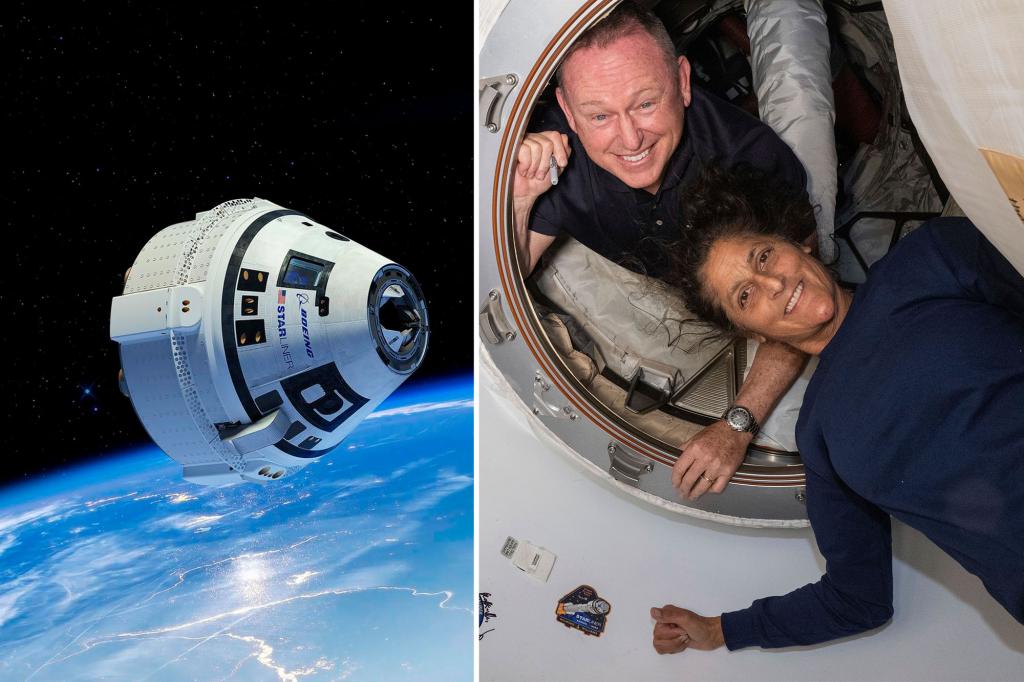NASA officials said that despite an indefinite delay in their return to Earth, the Boeing Starliner crew stuck on the International Space Station due to mechanical problems with their spacecraft are not “stranded” in space.
Starliner commander Butch Wilmore and co-pilot Sunita Williams have been cooped up in the space station for weeks following their June 5 launch on Boeing’s first manned space flight.
They were scheduled to return on June 13 after a week on the space station, but the spacecraft had problems with its thrusters and leaked helium while docking with the space station. This left them in orbit indefinitely while engineers analyzed the problems.
“We don’t have a target (landing) date today,” Steve Stich, NASA’s Commercial Crew Program manager, told reporters on a conference call, CBS reported. “We are not going to set a specific date until we have completed the testing.
“So essentially it’s completing the testing, completing the fault tree, bringing that analysis to (the mission management team) and then an agency-level review. And then we’ll lay out the rest of the plan, from undocking to landing. I think we’re on track.”
The Starliner spacecraft’s return module is docked with the ISS’s Harmony module, but Harmony has limited fuel, reducing the window for a return date.
According to CBS, Boeing’s service module, which houses the helium lines, thrusters and other key systems, is discarded before reentry and then burns up in the atmosphere.
Engineers want to study the failed systems and hardware before they are destroyed, and collect as much data as possible before the astronauts return home.
Stich and Mark Nappi, Boeing’s Starliner program manager, emphasized that Wilmore and Williams are in no way stranded or in danger, despite the media’s characterization of what is happening.
“It’s pretty painful to read all the stuff that’s coming out,” Nappi said. “We had a really good test flight … and it’s being looked at pretty negatively. We’re not stuck on the ISS. The crew is not in danger and there’s no increased risk if we decide to bring Suni and Butch back to Earth.”
Stich added that he “wants to make it very clear that Butch and Suni are not stranded in space.
“Our plan is to continue to return them to Starliner and bring them home at the right time,” he assured. “We still have a little work to do to get there for the final return, but they are safe on the space station. Their spacecraft is working well and they are enjoying their time on the space station.”
The Starliner launched with one known helium leak, but four others occurred when the craft attempted to dock. On the station, valves are closed to shut off the helium system, preventing further leaks.
However, when they leave, the valves must be opened again to restore the pressure in the pipes, CBS reports.
Even with the known leaks, the capsule still has 10 times the amount of helium it needs to get home. But Stich says engineers want to make sure the leaks don’t get worse once the system is pressurized.
The five thrusters in the Starliner’s service module also did not function as expected during the space station’s approach on June 6, but are ready for departure.
Starting next week, a new, identical booster rocket will be tested at NASA in New Mexico to determine what went wrong.
The soil tests are expected to last “a few weeks.”
Boeing has been plagued by a series of problems in recent years. In January, a fuselage plug blew off a new Boeing 737 MAX-9 operated by Alaskan Airlines at 10,000 feet. Its 737 MAX planes also crashed in 2018 and 2019.
